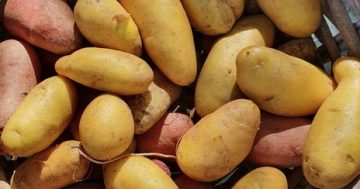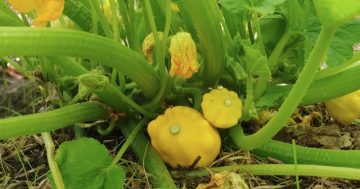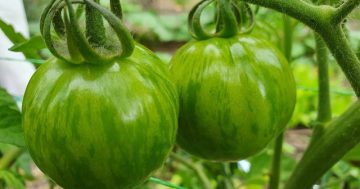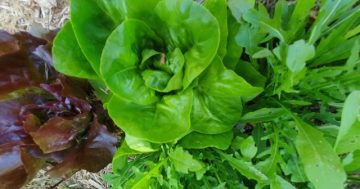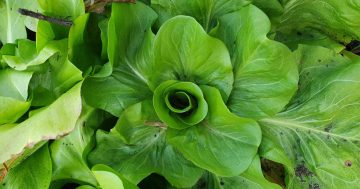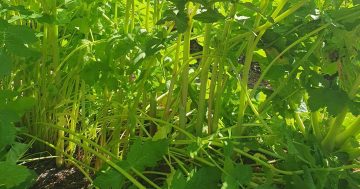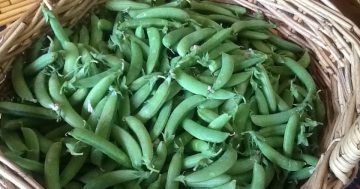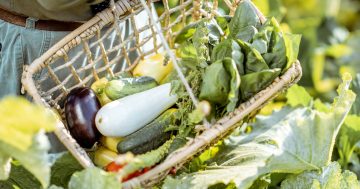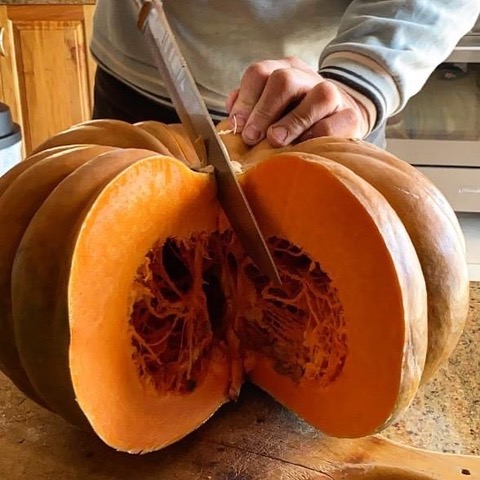
Cutting into a giant Musquee De Provence pumpkin. Photo: Helen Lynch.
Moving into late summer usually means sun, warmth, ripening pumpkins and lots of tomatoes. A flush of weather more typical of this time of year will be welcome.
The forecast suggests our region has a good chance of experiencing more conventional late summer weather than the last few years, although warmer than usual nights will continue.
This will help summer fruits and vegetables mature and may extend peak growing season well into autumn. We’re still likely to experience storms and extreme temperature, but this shouldn’t be significant enough to disrupt flowering and pollination.
Vegetable yields should still be reasonable for potatoes, tomatoes, cucumbers, eggplants and pumpkins, although we might have to wait for them!

Our columnists celebrate the pumpkin’s bounty. Photo: Helen Lynch.
Eggplants are missing in our garden because early plantings were annihilated by the potato flea. This pest loves potatoes and other Solanaceae and needs to be controlled to protect other summer vegetables.
Spending time reducing the load of these insects in the soil and on the potato plants, although time consuming, has been helpful. There are fewer of them hatching and the infestation has greatly declined.
The bonus was the tremendous satisfaction gained when collecting and dispatching them from the plants using sticky yellow fly paper – so good! We’re confidently planting eggplant seedlings this month, choosing quick growing varieties such as the smaller fingerling types (60-70 days to harvest).
If we do get some extended periods of warm sunny weather, baba ganoush will definitely be on the menu.
Either way it’s worth risking a few seedlings to see if extended succession planting can offer more success in variable weather.
This is a wonderful time of year to just keep planting despite weather uncertainty. Late summer (February) plantings along with early autumn (March) plantings can provide the foundation for eating through the cool seasons.
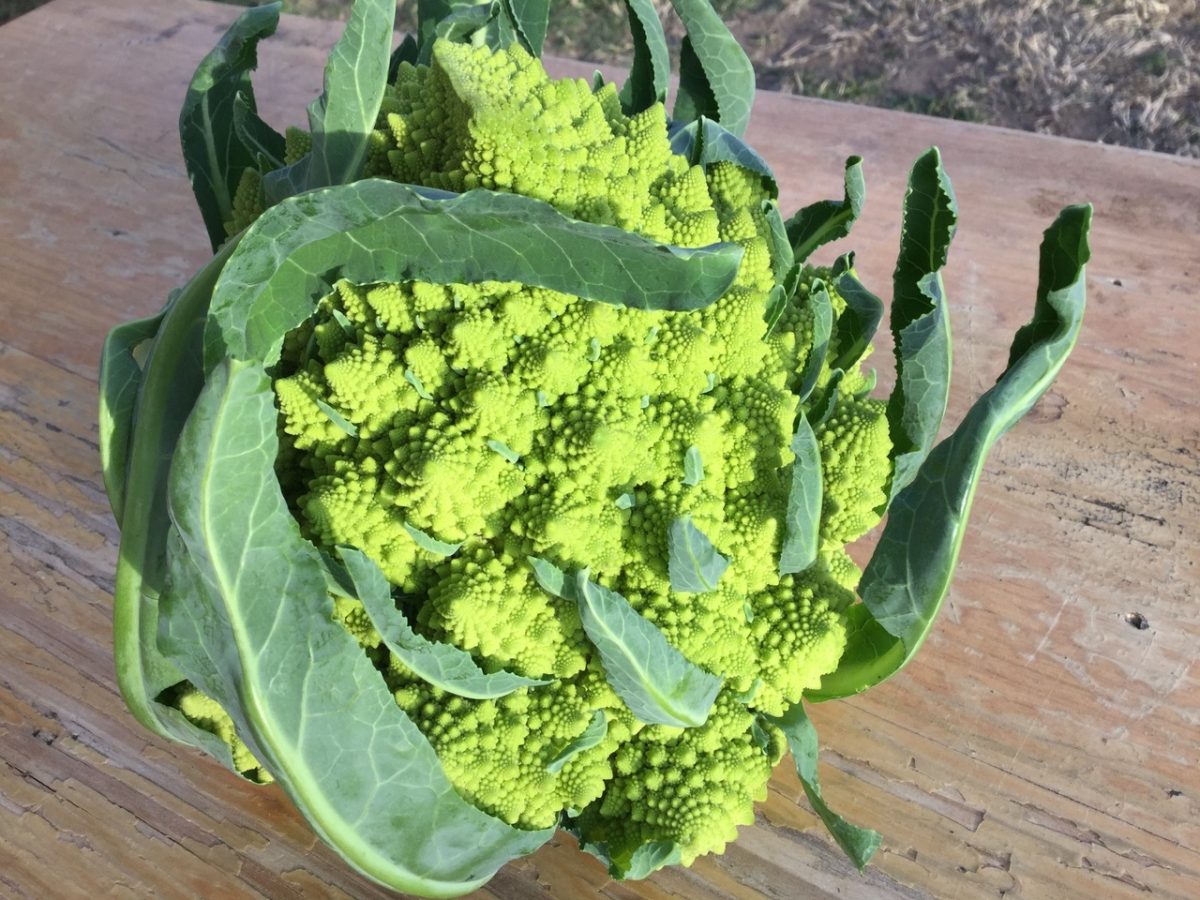
Romanesco cauliflower is one of the more unusual but now readily available varieties. Photo: Helen Lynch.
Brassicas, carrots, turnips and parsnips provide the backbone of the produce garden through winter. Planting now keeps food on the table in a few months time. Brussel sprouts seedlings can still go in. They may not have time to develop tall frames but you will still get a reasonable crop in June/July.
Keep planting onion and leek seedlings and don’t forget to plant bulbing fennel, beetroot, silverbeet and coloured chard. These are staples on your late autumn, early winter menu.
Cauliflower is a very versatile vegetable and is perfect for planting as a seedling this month. Planting in early to mid-autumn in our cool/cold climate region is often suggested but you can start a little earlier and keep planting well into autumn.
Late plantings will give you a crop in spring. Cauliflower is not difficult to grow. Remarkable considering it is one of the vegetables that has many, many health benefits, low in salt, carbohydrate and calories (hence cauliflower rice for people lowering their carbohydrate intake).
It’s also a great source of vitamins C, K, A, E, B5 and B6, manganese, folate, zinc, calcium, potassium, magnesium and antioxidants.
Green, orange, purple and Romanesco varieties are available if you’re easily bored in the garden or at the table. Cauli likes rich deep soil (for their large thick roots) and a very sunny outlook.
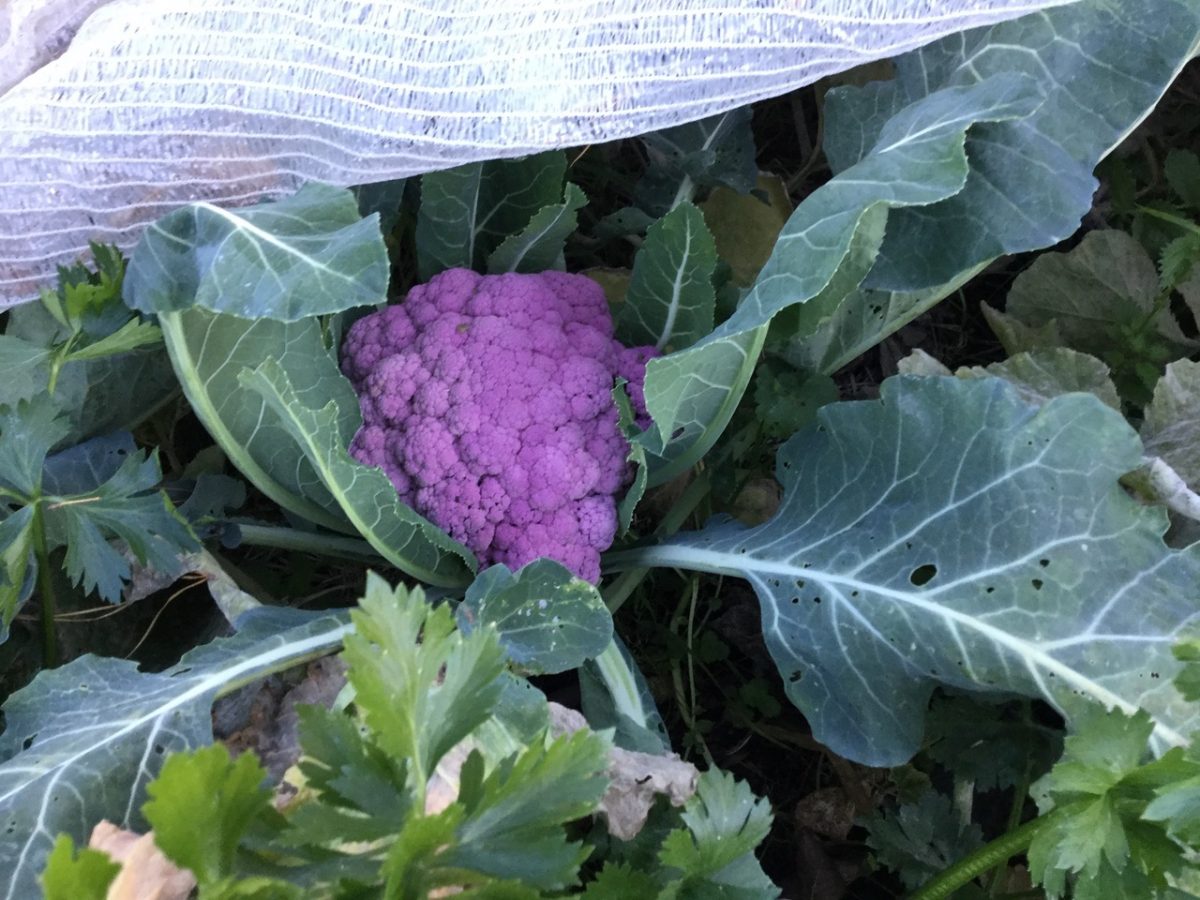
Purple cauliflower is also showy in the garden. Photo: Helen Lynch.
A rich compost or well-rotted manure with plenty of organic matter that helps the soil retain moisture will keep the cauli plants happy as will a spot away from the wind.
Mind the heat though. The plant is somewhat heat sensitive and may need sun protection. Try a shade cloth throw over. Cauliflower takes 12 to 18 weeks to grow from seedlings, so they do occupy space in the garden for some time.
Seedlings should be planted 50 cm apart, but save space by planting fast growing lettuce and Asian greens in between. By the time the caulis have grown large enough you will have harvested the greens and have food to eat in the meantime.
You can shorten the growing time with “mini” varieties like Snowball. This variety can be sown as seed now and harvested in 90 days.
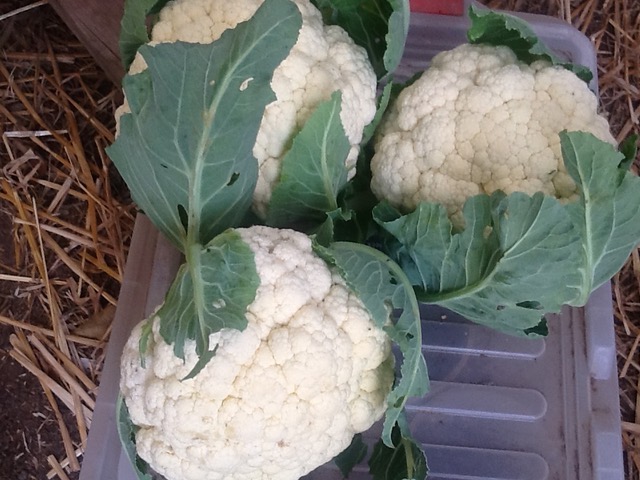
Nothing is better than home-grown cauliflower. Photo: Helen Lynch.
Even more remarkable are multi-headed cauliflowers. When planted from seed they can take as little as 70 days to harvest. But a note of caution. Our experience is that these types are a little unreliable.
It’s not uncommon to have poor germination and growing problems, specifically disease susceptibility and poor cropping. Perhaps they need more time to adjust to our growing conditions and seasons?
If you prefer sowing seeds directly this month, there’s plenty to plant. Beetroot, Asian greens, Asian turnips and Asian radishes, lettuce, brassicas and carrots.
Just keep the carrot seeds moist until they germinate; about 10 – 15 days, but much longer if the weather varies too much during the germination period.
Bronwyn Richards and Helen Lynch run Wynlen House Artisan Village Farm and Learning Centre, a small village organic market garden in Braidwood, NSW. Since 2006 they have grown and sold fresh vegetables, eggs, preserves and garlic and teach others to do the same.
Original Article published by Bronwyn Richards on Riotact.







